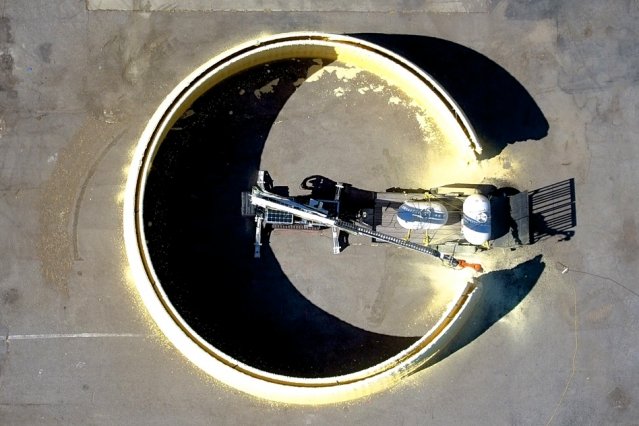3-D printing offers new approach to making buildings Technology developed at MIT could enable faster, cheaper, more adaptable building construction. ▶️️ Watch Video 🎥

From MIT News
The list of materials that can be produced by 3-D printing has grown to include not just plastics but also metal, glass, and even food. Now, MIT researchers are expanding the list further, with the design of a system that can 3-D print the basic structure of an entire building.http://news.mit.edu/2017/3-d-printing-buildings-0426Structures built with this system could be produced faster and less expensively than traditional construction methods allow, the researchers say. A building could also be completely customized to the needs of a particular site and the desires of its maker. Even the internal structure could be modified in new ways; different materials could be incorporated as the process goes along, and material density could be varied to provide optimum combinations of strength, insulation, or other properties.
Ultimately, the researchers say, this approach could enable the design and construction of new kinds of buildings that would not be feasible with traditional building methods.
The robotic system is described this week in the journal Science Robotics, in a paper by Steven Keating PhD ’16, a mechanical engineering graduate and former research affiliate in the Mediated Matter group at the MIT Media Lab; Julian Leland and Levi Cai, both research assistants in the Mediated Matter group; and Neri Oxman, group director and associate professor of media arts and sciences.
The system consists of a tracked vehicle that carries a large, industrial robotic arm, which has a smaller, precision-motion robotic arm at its end. This highly controllable arm can then be used to direct any conventional (or unconventional) construction nozzle, such as those used for pouring concrete or spraying insulation material, as well as additional digital fabrication end effectors, such as a milling head.
Unlike typical 3-D printing systems, most of which use some kind of an enclosed, fixed structure to support their nozzles and are limited to building objects that can fit within their overall enclosure, this free-moving system can construct an object of any size. As a proof of concept, the researchers used a prototype to build the basic structure of the walls of a 50-foot-diameter, 12-foot-high dome — a project that was completed in less than 14 hours of “printing” time.

Watching thanks
This post has been ranked within the top 50 most undervalued posts in the first half of Apr 29. We estimate that this post is undervalued by $2.70 as compared to a scenario in which every voter had an equal say.
See the full rankings and details in The Daily Tribune: Apr 29 - Part I. You can also read about some of our methodology, data analysis and technical details in our initial post.
If you are the author and would prefer not to receive these comments, simply reply "Stop" to this comment.